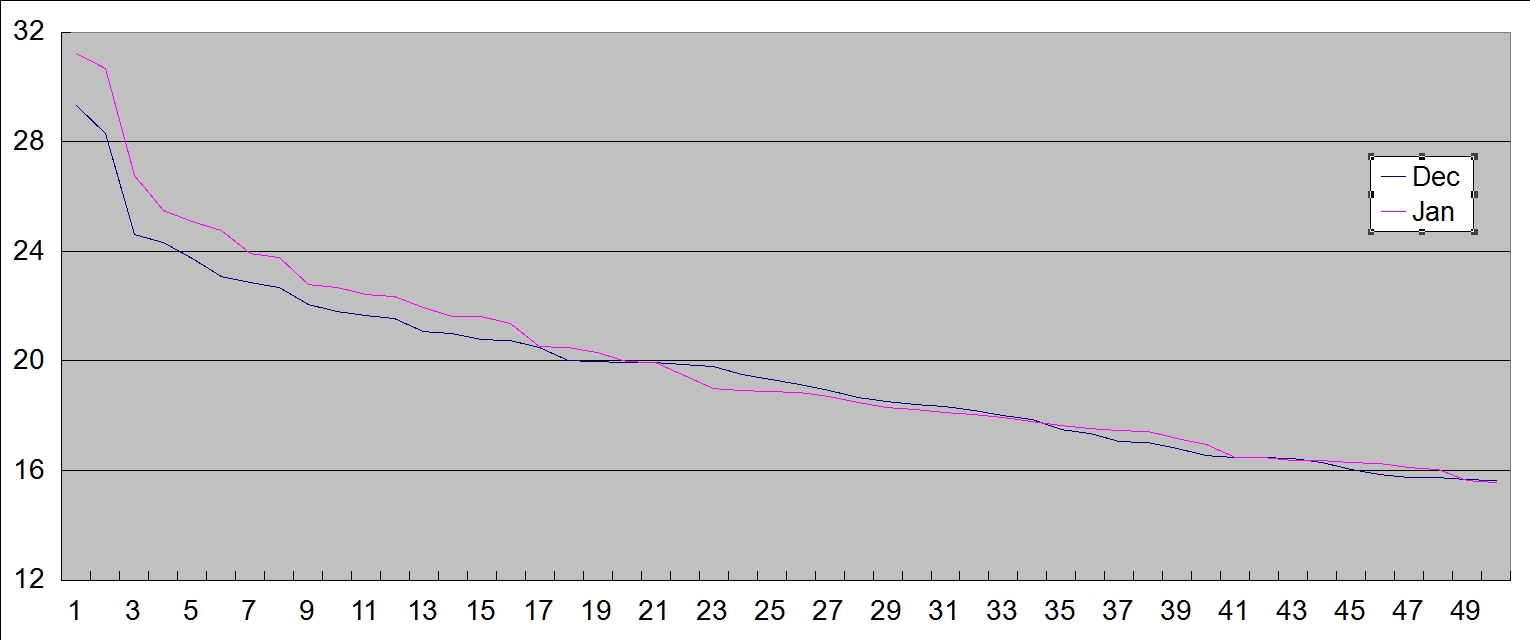I haven't written my inaugural article this late in the season since the very first season I started writing this blog in the 2015-2016 season. There's a lot I want to go over, so I'm going to keep the fluff to a minimum. I'll start by giving some of my insights on the 2020-21 season, then dive into the January QC, and conclude with my insights on prediction.
Insights on the 2020-21 Season
- For starters, this may be the least predictable tournament in all the years this blog has covered the tourney, and it is due to all of the exogenous factors. When I say exogenous, I'm talking about factors outside of basketball, data, and intuition. It is crazy to think that a tournament game could potentially be decided by forfeiture due to health risks.
- A second feature of this season is the reduced impact of home-court advantage. The majority of games are being played under conditions resembling the neutral-court ideal. The only advantage of home-court, in my opinion, is the impact on shooting. A full crowd's impact on court volume and court depth perception is very differentiable between the home team and the away team. Without it, I feel like road teams have a higher chance at winning this season, especially if they are the better shooting team (both in shooting percentage and shot selection). In Jeff Sagarin's rating system, he has home court advantage at 1.93 points, down from 2.00 at the beginning of the season, and drastically down from 3.03-3.31 range of the last four seasons.
- Experience is always a key factor during tournament time. When Tip-Off Thursday takes place (the Thursday slate of games immediately following Selection Sunday), it will be almost two years since any player on the floor played an NCAA tournament-level game. Your non-conference are rarely the quality of your conference games, your conference games are slightly below the level of conference tournament games (due to the lose-and-go-home nature of tournament play), and conference tournament games are below the level of NCAA tourney games (due to the season-ending nature of tourney losses). When it is two years since any player has played in a season-ending caliber game, conference tournament champions may be the place to look in 2021 for a national title winner as well. The last times a conference tourney winner went onto win the national title was 2018 and 2013 (keep that first one in the back of your mind).
QC Analysis
There are two obvious takeaways from this chart. First, from the end of December to the end of January, teams at the top of the QC have improved their quality significantly. This is typical of every season. Teams start to get their legs underneath them, they start to gel together, and they mostly do this against significantly inferior non-conference opponents. Second, their are two significant drop-offs in the QC: One from spot #2 to #3 and the other from spot #16 to #23 (albeit less pronounced than the drop-off from 2 to 3). At this point in the season, their are three tiers of quality in college basketball, two giants at the top (GONZ and BAY if you didn't already know), fourteen potential contenders, and everyone else. If I had to make a guess, I would predict two F4 candidates in Tier 1, one F4 candidate from Tier 2, and one F4 candidate from Tier 3, and the next chart will show you why I believe this.
This chart is a comparison of the current and last three QCs at the same point in time during their respective seasons. From top to bottom, 2021 has more in common with 2018 than any other curve. It also corresponds to 2019 up until spot #13, and 2019 had a lot of top seed advancement to the S16. Even though it doesn't mirror the quality of 2017, keep in mind that 2017 also had a plethora of incorrectly seeded teams. It is very early in the season, so I don't want a snap to judgement. More data as the season progresses will refine the QC to a more accurate model.
Predictive Insights
One of the last conversations I had with my mentor Pete Tiernan was about meta-analysis. In simple terms, meta-analysis is the study of when models are applicable and when they are not. I always try to employ a rule-based method to my selection process in order to limit the influence of subjectivity. I also believe that even for the best of rules, there is most likely an exception to the rule, and this is where meta-analysis takes over. For example, one of the models I was eagerly hoping to employ in the 2020 tourney was the Seed-Group Loss Table (SGLT, links: Part 1 and Part 2), but the season was cut short. I am very hesitant to apply it to 2021 because its approach to quantifying seed-group quality is influenced by number of games played and number of losses. With teams postponing and outright cancelling games throughout the season, the number of games played are reduced and games lost are potentially reduced, making the loss-percentage of the seed-group artificially manipulated and historically incomparable. The return and improve model is also severely unreliable as no one played a tournament game last year. It's a lot to sort out for the current season, and believe it or not, Selection Sunday is exactly 70 days away. Until then, thanks for reading my work and I hope to see you back for the next article.


No comments:
Post a Comment